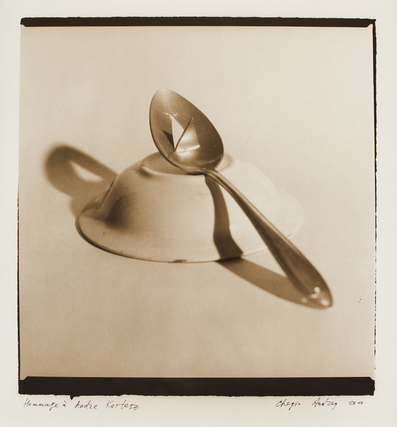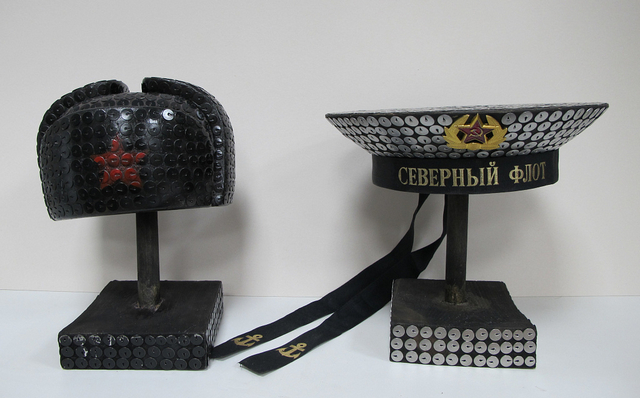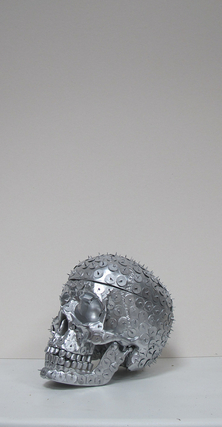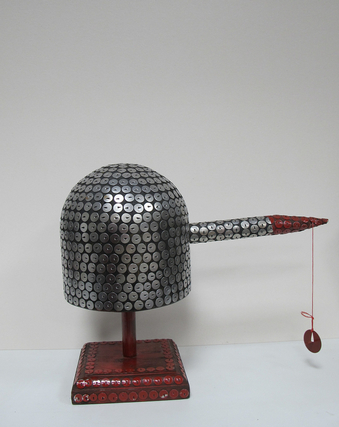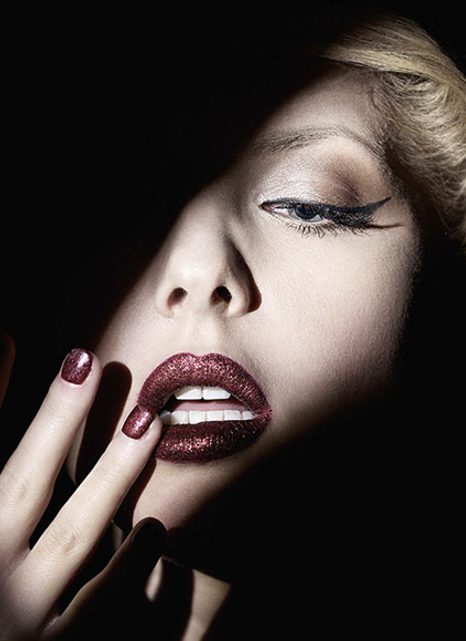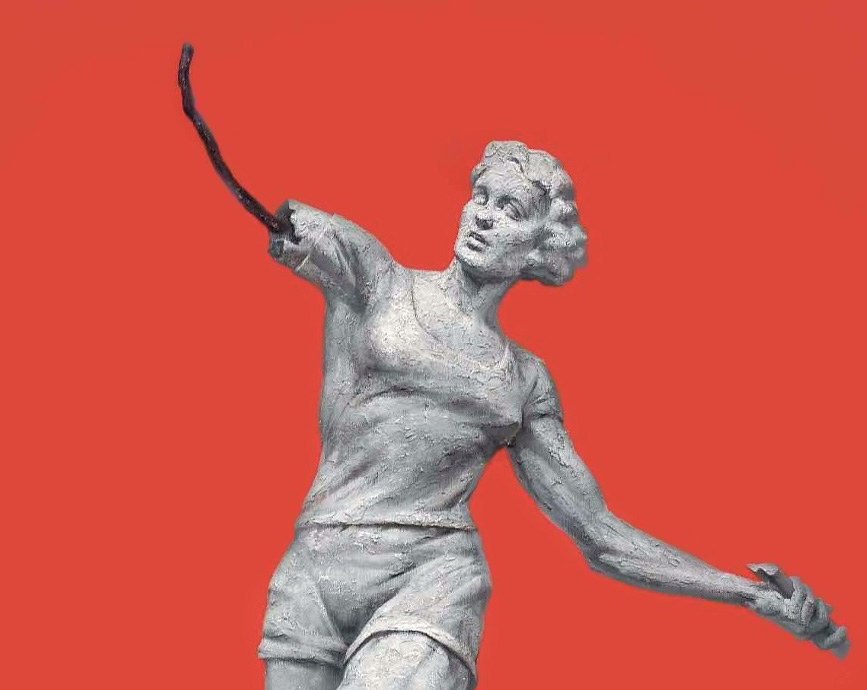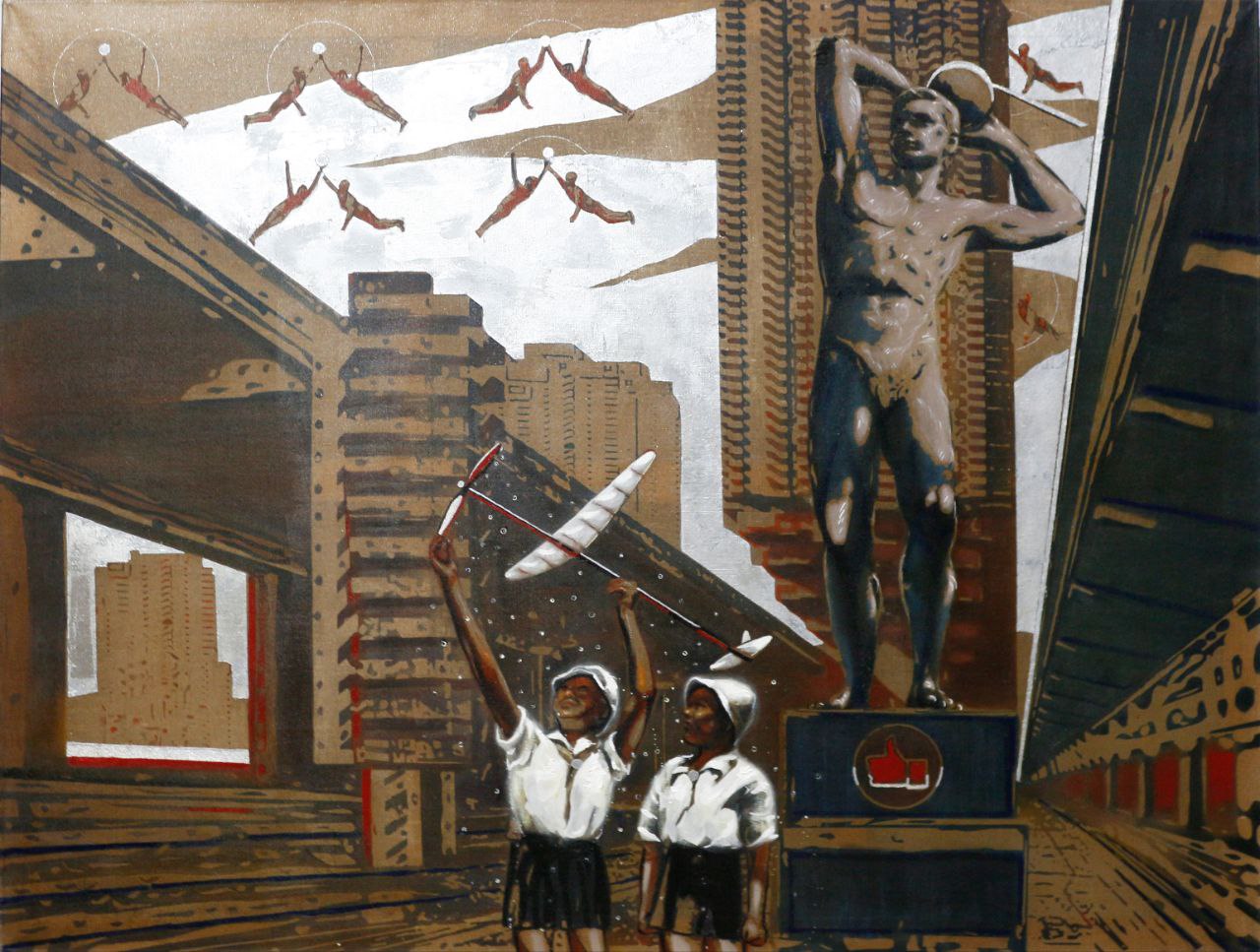Erarta Museum presented a postmodernist textbook on modernism conceived by the Russian artist Andrey Chezhin
The Drawing Pin and Modernism project emerged and evolved gradually, its previous versions having already been presented to the Russian, European, and American viewers. What you see here is its definitive edition which went on to form the artist’s original Drawing Pin Museum.
Andrey Chezhin’s objects and photo collages were designed to mimic the artworks and trademark techniques of the most important modernist artists. With much knowledge and irony Chezhin shows us what is unique about each of these greats. For instance, his hommage to Claes Oldenburg is essentially intertextual: Chezhin’s limp and shiny black pin reminds us of Oldenburg’s soft sculptures sewn out of rubber and canvas. One of the first such sculptures created by the American artist was a soft toilet which, in its turn, referenced Marcel Duchamp’s urinal.
Andrey Chezhin’s project is a postmodernist textbook on modernism. Here the artist puts to use the entire range of postmodernist gimmicks: revision and ironic re-evaluation of cultural achievements of the past, hypertextuality, frequent quotations, and deliberate obscurity of the narrator’s standpoint. Modernist artworks have great public appeal and keep setting records in terms of quotability, auction sales and exhibition visitor numbers. At the same time, they provoke mixed feelings of admiration and irritation, since the days of major breakthroughs are now long gone. Andrey Chezhin teases modernism and quite literally pinpricks it, repeatedly challenging it to a duel/dialogue and piercing it with his drawing pin épée.
It was not by chance that Chezhin came up with his vision of a drawing pin, at once flat and three-dimensional. Modernists made a conscious effort to overcome the inertia of a flat canvas by either making it even flatter or, contrariwise, augmenting it with sculptural effects. Andrey Chezhin gives this a new reading. In his works, the head of a drawing pin might serve as canvas, just like in his hommage to Jackson Pollock, while the body may well become a sculpture, like in the hommage to Richard Serra. Hommage to Lucio Fontana brings both of these options together, since Fontana himself used to make vertical cuts in his canvases, literally creating 3D paintings.
For Chezhin, the drawing pin becomes a module or, if we use a term coined by Kazimir Malevich in his eponymous theory, the additional element. According to the writings of Maria Sheinina, “Andrey Chezhin’s quest is to identify the ‘additional element’ in the most characteristic (well-known) work by the most characteristic (well-known) modernist.” The artist uses the mundane piece of stationary to measure the diverse range of modernist ideas, shifts his attention to his contemporaries, and then to household items. The objects photographed by Andrey Chezhin transcend the frames of aestheticised photographs, turning into artworks in their own right. The artist identifies their quintessential features, enriching the design of various utilitarian items with the design of the drawing pin itself.
Ever since the rise of modernism, art has been inseparable from the scientific and technological progress, establishing novelty as the fundamental principle in art. Various -isms emerged out of the need to grapple and, in one way or another, describe the rapidly changing world. The same principle is used to determine the value of information: here, new also means worthwhile. The drawing pin, whose head is as round as zero and body sharp as one, has a grotesque resemblance to the bit, the basic unit of information presented as 01.
Andrey Chezhin’s project is endless and absurd. It can ‘pin down’ each and every one, continuously adding up the drawing-pin bits and kilobytes of encrypted information known only to the artist himself.

